Nuclear Upended: Innovation Bootcamp
Byline: the Nuclear Upended Team
Your most critical assets deserve more than just fences and cameras. NV5’s cutting-edge layered security solutions extend detection and response beyond traditional perimeters. From advanced geospatial analytics to integrated surveillance and access control, NV5 helps you stay ahead of threats before they breach your defenses. Learn more.
Byline: the Nuclear Upended Team
Recently, the Nuclear Regulation Authority of Japan announced that Shikoku Electric Power Company's Ikata Unit 3 had cleared the new, three-step process required to restart nuclear plants in Japan. This latest announcement also came with the closely coupled announcement that Shikoku would permanently close and decommission another nuclear unit, more or less in trade.
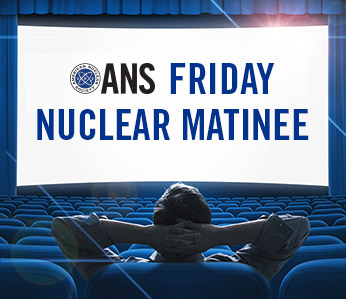
This week's Friday Matinee features an update on the construction progress at Plant Vogtle's Units 3 and 4, the new AP1000 units being built in Georgia. This is the First Quarter 2016 update and runs less than ten minutes.
Opportunity. It's the first thing that comes to my mind as I prepare to register for the ANS Annual Meeting in New Orleans.
Yes, it already has, but the truth is so much more boring than the assertions of megadeath, that it generally gets ignored.
Will Davis recently wrote an article on the Cafe: Chernobyl Through the Mist of Decades with a look back, lessons learned, and life now. But today, April 26, marks the 30 year anniversary of the Chernobyl accident. We encourage everyone to take time to remember Chernobyl, and to review some of the promising information that has been written about the area now, as the world moves forward.
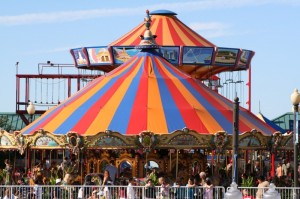 The 306th edition of the Nuclear Energy Blog Carnival has posted at Neutron Bytes.
The 306th edition of the Nuclear Energy Blog Carnival has posted at Neutron Bytes.
Today's video is brought to us by Third Way, and takes a closer look at the energy sources, and why we need to add nuclear into the energy mix. Wind and solar are just not able to do it alone and needs nuclear to get the level of electricity we need without destroying our environment. "So, let's play it smart and develop a mix of low-carbon solutions, because we won't get a second chance to stop climate change." Today, #EarthDay (and everyday), let's remember to bring good things to our planet.
When Earth Day rolls around on April 22, it marks an opportunity for us to consider our relationship to the natural world, and how we can improve that relationship. The first Earth Day in 1970 signalled the first serious push by ecological activists to influence mainstream public opinion. From its initial beginnings in just the United States, Earth Day has grown until it's now observed in almost 200 countries.
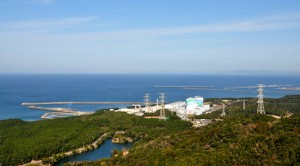
Sendai Nuclear Power Plant, courtesy Kyushu Electric Power Co.
Two significant earthquakes have struck Kumamoto Prefecture in Western Japan within a week, and the Japanese nuclear plant owners and their regulator (the Nuclear Regulation Authority, or NRA) have responded to some reignited fears over nuclear plants in this region by beginning to publish reports and data. The data show that at no point was any of the plants in danger.
 The 305th edition of the Nuclear Energy Blog Carnival has posted at The Hiroshima Syndrome.
The 305th edition of the Nuclear Energy Blog Carnival has posted at The Hiroshima Syndrome.

BONUS nuclear plant as it appears today (Photo courtesy US DOE)
Among the many different reactor concepts being investigated in the late 1950s and early 1960s was the idea that the steam produced by a boiling water reactor, which normally goes straight to the turbine building, could be superheated (or have further heat added once it was already steam) by nuclear energy. This would greatly increase the efficiency of the plant, as well as make dry steam at a high pressure that would allow the use of (less expensive) commercially available equipment in the steam plant. Two reactors were built to investigate the idea of performing both processes in essentially the same reactor-one in South Dakota and (perhaps incredibly to today's readers) another of a very different design on the island of Puerto Rico.

Our Friday Matinee this week looks at China's Shidao Bay nuclear plant. This plant, widely touted as a Gen-IV design, is a bit unusual in that it employs two HTGR's (that's High Temperature Gas cooled Reactors) supplying steam to one turbine generator. The video gives a good basic look at the plant's design and shows the steady progress being made toward fully operable, commercial HTGR's.
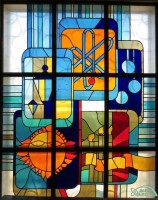
Courtesy SSE ChNPP.
In the administration building of the Chernobyl nuclear power plant, a number of stained glass windows (as seen to the right) recall the optimistic tone of industrial Soviet-era art that can still be viewed today at power plants around the former USSR. That these are well preserved is not the result of a specific effort, but instead because of the essential abandonment of large parts of the facility, and even the entire region, after the most serious nuclear reactor accident in 1986 in history.
In my last article, I briefly related a story about a research team that had essentially cured HIV during animal trial studies with rats using medical isotopes. Following up on the scientific literature, it revealed similar success (E. Dadachova, A. Casadevall, Semin. Nucl. Med., 2009, 39(2), 146). Just recently, I heard another story during a seminar on alpha therapy that involved prostate and bone cancer. A patient was in such excruciating pain that his family had to transport him to the hospital on a stretcher in the back of a pickup truck. Following a single injection of an alpha-radiation drug, he walked out of the hospital on his own later that day.
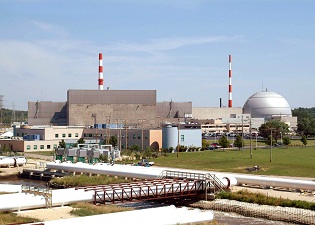
Dresden Nuclear Generating Station (Photo courtesy Exelon Nuclear)
August 2012 was hot in Chicago. It was one of those times, while the American Nuclear Society was assembled there for its annual meeting, when the air was so hot and laden with humidity that it palpably hit you when you walked outdoors. All air conditioners, everywhere, were running at their maximum just to keep the buildings in the city habitable.
As we come to a completion of Women's History Month, we at the American Nuclear Society would like to celebrate one of our own Women in History - the first female ANS Fellow, Margaret Butler.

Two videos are featured this week. The first is a short, brand new (released this morning) video from Georgia Power showing some of the progress at Vogtle Units 3 and 4, set to music.